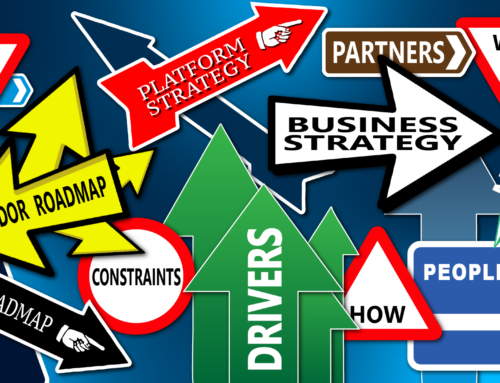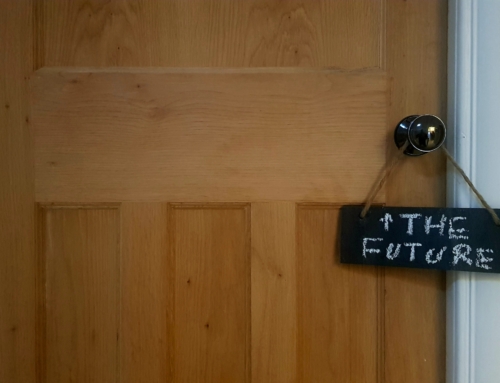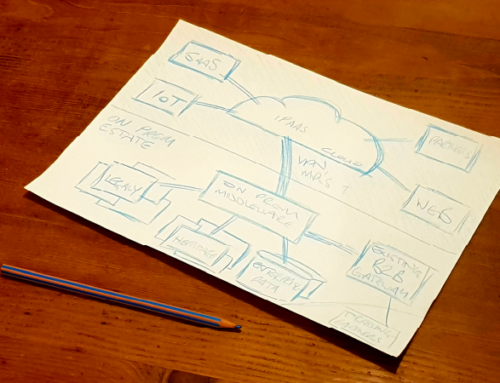Our last post on integration demand management focused on managing the delivery throughput for a centralised integration competency centre, however, the centralised delivery model is not the only solution for an effective integration strategy. These approaches may be more appropriate for you depending on your strategic outlook and IT objectives, but these will present different and often less obvious demand challenges that need to be addressed.
Of course, to start with you need to evaluate the best integration Centre of Excellence (CoE) model for you and Jon Boxall’s post ‘Integration competency – one size doesn’t fit all‘ is a really useful resource for helping you to shape your thoughts. In this post, we’ll focus in on some of the specifics of integration demand management that face the organisations that operate a non-centralised model – or to put it another way; IT departments that don’t deliver their integration requirements through a single specialised, centralised integration delivery team, but delegate this out to the individual IT teams to build their own integration artefacts to a defined set of technology and platform standards.

Recognising the demand for an integration capability
From one perspective, it could be argued that if you are not doing centralised integration then you have the demand side covered by your delivery teams, the box is ticked and all is rosy. Unfortunately, life is not that simple and you probably don’t have as robust approach as you think:
- The majority of integration work in IT departments is hidden, suffers from late planning and design and is a lot more inefficient and expensive than it should be. If you have established an integration team you are probably trying to tackle these issues. Understanding how much integration work is going on is a pre-requisite of ensuring the team delivers value.
- For an organisation to have adopted an integration competency centre model there needs to be the recognition that some commonality and a standard approach to integration challenges will bring advantages. Principle amongst these will be the cost saving available through reuse in the middleware platforms, design patterns and technology through to the architectural flexibility and agility that a well co-ordinated strategy will deliver to an organisation.
- A minimum requirement is strong enterprise level architectural policy that recognises integration as a capability, defines the integration principles and standards as well as supporting the individual teams in their adoption of a common approach to integration delivery. Without this recognition, organisations tend to build a tangle of systems with many separate, and uncoordinated, middleware platforms, each of which will require their own maintenance strategies, risks and costs. You need to know where this is happening.
If this is where you are starting from, contact us for a discussion about what you need as a minimum and where to start establishing your integration capability.
Advertising for demand for the Integration Capability Centre
The size of this challenge will depend on the model and maturity of your integration capability but broadly speaking a new CoE will need to work hard to ensure that it is visible within the IT landscape. The integration demand needs to be driven by the presentation of clear E2E requirements that can be assessed and reviewed. This is the fundamental first step towards establishing the right governance and standards across the teams who are building integration points.
- Strong architectural leadership is key. This is true for any integration capability but especially for a new one with limited opportunity to directly define integration requirements. It will be critical that the head of the integration team has the right approach for influencing the way in which requirements are satisfied to make sure they align to the organisation’s strategic integration goals. This will also require the ability to pick their battles so that the capability remains on the right side of being a business enabler, not just another governance board to fight your way through.
- Be visible. Although this guidance is not unique to integration, it is certainly our experience that as a more technical discipline than other capabilities which often work more directly with the business, integration must shout loud to ensure it is recognised within the broader IT department. This is even more true when the integration CoE is limited to a few individuals as can be the case in non-centralised implementations. Make sure the message on the value you can deliver is clear and frequently repeated.
- Be easy to work with. Don’t make working with the integration function a restrictive experience but a supportive one that enables projects and programmes to deliver their objectives in a way that meets their timescale and budget constraints as well as moving forward the integration agenda. Often this can mean playing the long game and nudging the strategy forward a step at a time. The culture of your organisation will determine how easy this is but your first rule should be ‘help, not hinder’.
Be clear on what you want to offer
In order to align your CoE resources to the demand you are likely to encounter you will need to be clear on what support you want to offer. There are a lot of capabilities you can offer, ranging from standards coaching, the sharing of best practice’s and training as a minimum, through to design assistance, help with requirements validation or provision of a common serviced set of integration environments.
- Be clear on what you offer and make sure everyone understands it. You don’t have to offer everything at once. Start from a small base, build a reputation by doing a great job and expand your coverage.
- As you become clear on what services you will offer and what your roadmap is to future offerings, you will be able to identify the resources you need to support that plan
Understand the current landscape
It is important you understand what you already have in the integration landscape. What solutions are running in production, what tools and technologies are available and can you see it all easily?
- Undertake a survey of the current integration landscape to build a more comprehensive picture of what is being used by which teams and for what purpose. Once you know what you have you can align these with the scope of the CoE capabilities you want to cover, which technology to use for which task and what standards should be followed.
- Ensure your assessment also covers an overview of the architectural and programme governance boards; these are crucial opportunities to enact decisions that the Integration CoE take and to understand the projects coming down the pipeline
These decisions will start to shape how integration will be delivered in the future and how it will be executed. This will help to generate a picture of how much of it will be happening and in what teams.
Resourcing the Demand
Once you have a clear understanding of what your capability offers and the broader IT organisation know they need to engage with you, this demand will need to be catered for. In many respects, this issue will have a great deal of similarity with the demand challenges faced by the larger centralised models and our prior post “Seven challenges of integration demand planning” covers many of the challenges and is recommended reading for anyone seeking to understand more on this subject.
- In common with centralised models you will have to understand how much work will fall into your lap even if you are working in an advisory capacity. If guidance needs to be given you need analysts and designers in your team, or loosely affiliated with you, to provide the guidance. You need to understand how long it is likely to take and when your skilled people will be available. Then, you need to put their diaries together.
- The worst thing is to offer a guidance capability and then find that the people you have allocated to this task don’t have the time to do it. Be realistic about what they can achieve in their days, understand how much demand there is and then resource up or reduce your offer.
Ensuring distributed teams can deliver on the integration strategy
Delivery teams will need to make sure they have enough of the right skilled resources to implement the requirements on the chosen platforms. They may need you to help with understanding how long activities will take them to achieve and will want your support if they are changing their working practices to deliver against your standards. You can mitigate the impact of this by focusing on the following:
- Early engagement with the teams to understand their requirements and timescales;
- Best practice and training support for their people to make sure you can teach them how they can take advantage of the benefits of strong standards;
- Ensuring there is accountability to ensure the delivery to standards by reviewing deliverables at design and build stages to make sure that they conform to standards. If they don’t then you may need to allocate more time for training.
Tracking integration work – Tools
Key in making sure you are managing and supporting the integration demand is ensuring you have the visibility you need of the work being undertaken
- Make sure you can support your offer and your work with appropriate tools. This could be a spreadsheet with a list of potential projects in your pipeline through to project tracking tools that can be used to record status and progress at each stage in your process. The key thing is to make sure the information stored is as accurate and up to date as possible. Don’t wait for others to tell you about changes, go out and gather the information yourself.
- Get the best out of the tools you use by making sure you understand what functionality and capability they can offer you. Don’t limp along with a poorly configured tool. Invest in some expert guidance that will enable you to automate your demand process as much as possible.
Validating the implementation
This is where we square the circle with the earlier guidance on making sure the integration CoE is visible. Any one of the Integration CoE models if implemented successfully and well managed will bring substantial benefits to the E2E delivery of your requirements. Being able to measure these benefits will help you identify whether you are realising these and furthermore enable you to publicise these and demonstrate the value the CoE is providing to the business. The metrics that you want to track will be dependent upon which of the models you implement but principle among these will be:
- Total cost of ownership (TCO). Building on your assessment of the integration landscape you should be able to identify a total cost of these platforms. A periodic assessment of these will enable you to understand how the CoE is bringing control to the middleware technologies deployed
- A key measure of cost saving and flexibility, identifying reuse across the integration platforms will provide you with an opportunity to directly measure the value of the capability. Greater reuse means reductions in cost and quicker E2E delivery for projects
- Cost of Integrations. Linked to TCO and reuse but a powerful metric in itself, identifying the cost to the business of integration in projects and the impact of the CoE on this measure is a direct way to demonstrate the value being provided.
Putting it all together
Our discussion of the demand challenges for the non-centralised integration capability centres has focused on ensuring that the capability is well defined, well publicised and simple to engage with. Once you have established these principles then resolving the demand challenges will feel a lot like the challenges of running a centralised integration team. You still need to understand who to talk to, where the work is happening, how long it takes and where the outputs will be delivered and maintained. The differences will centre around the leavers you have to pull these elements together and ensure that your CoE is delivering value for the business.
At Wheeve through our collective experience, we’ve established, worked with and supported many integration capabilities over the years each with their own particular circumstances. Through this experience we’ve built up a substantial body of best practice, templates and the change management expertise to help implement new ways of working. We’d be happy to talk to you about how we can use our experience to help you and your team.








